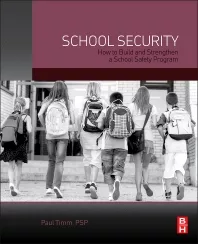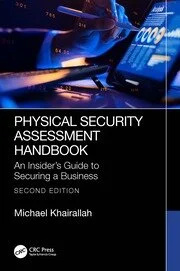Who, What, When, Where: How to Keep Travelers Safe
As a security manager, you have a challenge to manage risks your travelers and expatriates face when they head to that overseas conference, meeting or assignment.
As a security manager, you have a challenge to manage risks your travelers and expatriates face when they head to that overseas conference, meeting or assignment.
Today, the world appears smaller than ever before. Far-flung locations are more easily accessible than they were even a generation ago. There is the desire to venture off the beaten track away from highly commercial and well-known business environments. It’s the call to do something different and out of the norm coupled with the ability of easy access that attracts people to risky places.
The locations where organizations do business are expanding. Emerging markets draw business travelers and expatriates, some with little local experience in the region where their organizations are expanding.
Travelers and expatriates can largely be placed into two extremes. They are people going to a place for the first time, and those who see themselves as seasoned veterans. Both groups can have inherent problems. But by taking a look at “The W’s” – the where, what, who and when (as well as the how) – ahead of time, the security director can get a better feel for the risk involved for all levels of travel.
First-time travelers sometimes do not thoroughly research risks or read the pre-trip advice provided. They are often more concerned with the overall details of hotel reservations, airline connections and transportation. And seasoned travelers may be complacent, also not taking a look at the pre-trip advice and believing they have nothing to fear and know all the dangers.
Take a step back and look at plans for both groups. Even before the trip is booked, consider “The W’s.”
Where
This is the inherent risk – security and medical – in traveling to to any location. It’s known as the ‘bad neighborhood’ concept, and it applies even to low-risk countries. Just because a country is considered low risk does not mean it does not have areas of high risk.
Start by reading the risk reports for cities where your travelers and expatriates are headed to know where issues historically arise. Even places like London and New York City have dangerous sections – other countries considered safe are no different. It’s also worth taking the time to ask people on the ground for advice who know the cities well. Talk to counterparts and peers.
Unsafe places are not necessarily areas where violent crimes take place. Petty crimes of opportunity against travelers plague some areas considered “safe.” These areas can include markets, malls and tourist destinations. Advise your travelers to remain aware of the immediate environment and expect the unexpected.
What
The “what” deals with certain inherent dangers in various activities. And it often has to do with leisure as opposed to business travel. Travel delays can also play a role, as business travelers might be looking for activities to occupy their time while waiting for the airport to reopen. A three-day business meeting in Indonesia, for example, has different risks than a three-day white water rafting trip to the same country. People also tend to take greater risks when the perceived threat is low.
Some points to consider:
- Evaluate the real versus perceived risk;
- Determine whether travelers are being responsible or irresponsible by placing themselves – and the reputation of the organization – at risk;
- Qualify the experience relative to the environment or the situation.
Research the company or individual providing the activity – that could include the organization behind the meeting or convention. Do they have a solid track record? Can they produce references? If something unexpected happens, can they handle the challenge? Above all, travelers must be comfortable with the levels of risk.
Business travelers may be drawn into leisure activities during down time or travel delays. Some organizations place restrictions – or do not allow – side trips. Just as a company has a Duty of Care to protect their travelers and expatriates, an employee has a “Duty of Loyalty” to his or her employer to abide by the rules and not engage in risky activities, as referenced in the Duty of Care and Travel Risk Management Global Benchmarking Study.
Also be aware that that local vehicle and airplane crashes claim many victims each year, so research driving and flying before your travelers set out.
Who
What things about your travelers and expatriates add to the risk? Consider the difference between male and female travelers, as well as health risks.
Any travel for a person with health issues – like severe diabetes or a heart condition – could be considered risky. If the medication is lost, what are the procedures for obtaining new doses?
Health conditions often do not mean a person should not travel, but they must be vigilant of their health as well as issues that can arise. Seek solid medical advice from professionals familiar with a particular destination.
Consider if this is a first-time traveler. Remember that this also includes inbound travelers to the United States. A trip to New York City, Philadelphia or Los Angeles can be extremely stressful to anyone not used to the layout or local travel options.
When
Time of travel can be big deal. Look at the local calendar for festivals, holidays and events before booking travel. Ramadan has effects on meetings in the Middle East. Local holidays and religious events can also hamper travel and meetings.
Elections, strikes and work stoppages can also throw a wrench into travel plans and be unpredictable.
For travel to some areas, look ahead to the weather patterns. In the Caribbean, hurricane season runs June through November. Other regions also experience rainy seasons or times of sweltering heat.
How
The right approach to deciding if a destination is unreasonable is to consider all the variables. Map out the itineraries. Imagine things that could go wrong and play out the scenarios. Think about the unthinkable and determine how to respond.
Ask yourself the following:
- Will mobile phones work in the destination?
- Are your travelers with a group or on their own?
- Do your travelers speak the native language or know only a few phrases?
- How will they navigate or get transportation in the area?
- Who will they call if they get into trouble?
A measured approach to assessing risk when it comes to travel can help your organization not only fulfill its Duty of Care responsibilities, but help grow successfully into new and expanding markets.
About the Author:
Timothy Daniel is Group Executive Vice President, International SOS Assistance, Inc. Daniel’s career spans 25 years in technical, sales, marketing and general management roles. After spending five years working in the Asia Pacific Regional Headquarters of a Singapore-based multi-national computer firm, he joined International SOS in 1998 as the Corporate General Manager, Sales & Marketing. He consolidated the worldwide product portfolios of the AEA and International SOS subsidiaries, supervised the development of the Group’s corporate identity program and managed the deployment of the company’s first global Customer Relations Management (CRM) system. Daniel conducted post-graduate studies at Miami University School of Business in Oxford, OH and holds a Bachelor of Science degree in Electrical Engineering from Rose-Hulman Institute of Technology in Terre Haute, IN. He was a participant in the Leadership Philadelphia Core Program in 2007-2008 and serves on the board of Youth Build, a Philadelphia charter high school aimed at providing opportunities for out-of-school youth.
Like what you’re reading?
Subscribe FREE today at www.SecurityMagazine.com/subscribe
Looking for a reprint of this article?
From high-res PDFs to custom plaques, order your copy today!







